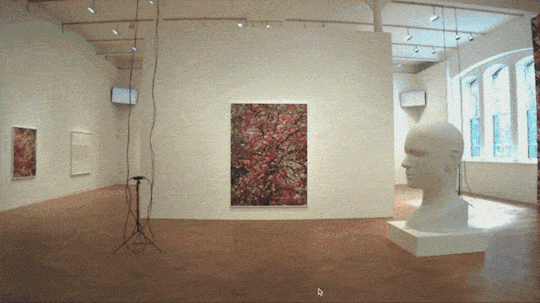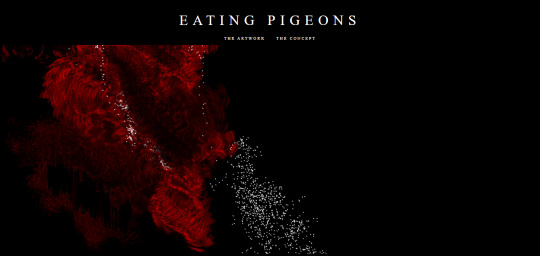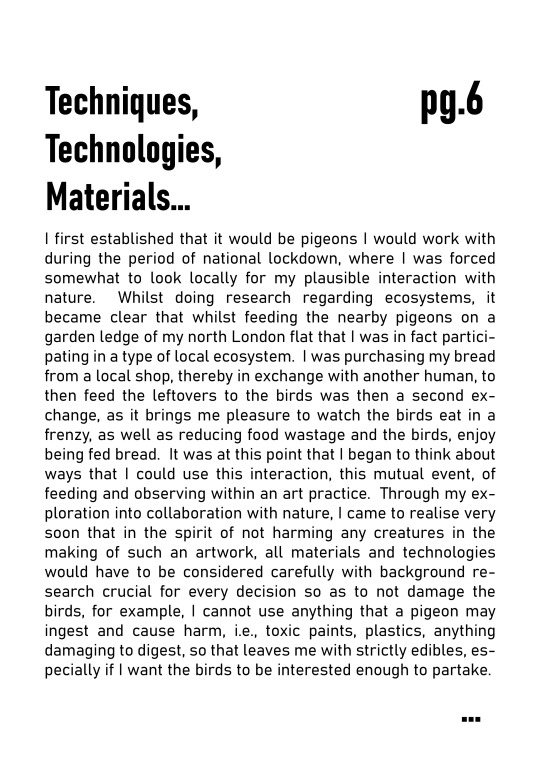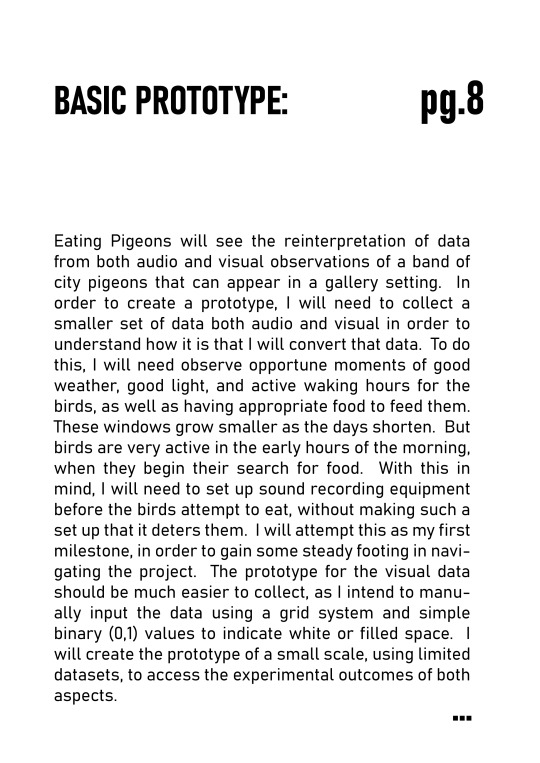Text
Degree Show Participation
I exhibited my artwork as a part of the final year degree show Third alongside my peers. To achieve this it meant sticking to submission deadlines, and being as helpful as possible to the web team by ensuring all media and content is readily useable and in the correct dimensions.
In the making of the degree show I took part in votes and decisions about titles and posters, and adhered my work to collectively work as a part of the overall theme. Being a part of the degree show was something I struggled with overall as I had many technical difficulties during isolation as well as struggling to stay on top of the everchanging status of things via the many communication platforms, but I ensured that I didn’t cause any issues or inconveniences for my peers by submitting works and responses to forms promptly.
I feel that I would have liked to be more involved if the exhibition and organisation could have occurred in person and with a physical setting. I really struggled with the large amount of computer reliance whilst studying during the pandemic.
0 notes
Photo


27th April 2021, update:
Over the past week I have created the website to host my artwork. Eating pigeons code is embedded into HTML site to be published online, looks good, now to adjust the brushes using more organic handmade marks, and adjust some of the background noise in the pigeon audio recordings coming from the street. Then work on the final write up for the concept tab.
0 notes
Photo




19th April 2021 update:
Using multiple “brushes” simultaneously that are coded using different arrangements of the audio qualities. This brush uses bass, mid and treble values to assign colour, brush size, brush speed, as well as x and y locations on the canvas.
0 notes
Photo

15th April 2021 visual code build update:
Using a combination code from my prior tests in audio visualization and Brownian motion I have worked out how to achieve a visual painting motion that works by using the bass, mid and treble of a recorded track (pigeons). At this point I will now need to focus on refining a brush that reflects the nature of the project and also adheres to my envisioned aesthetic for the generative painting.
0 notes
Text
end of March update:
Focusing on the project management aspect --
Created a casual work document 29th - 31st March describing my project & progress to share with my project supervisor in order to receive constructive feedback for moving forward with this major project.
Pigeons are beginning to return to their ledge as the weather improves.
Laptop repairs are required which is slowing down the digital build aspect of the project, however, this time can be used to further develop and hone in on the conceptual side of the project and how it relates to my art practice as a hole and in the future. (I therefore can only work on the building aspect in the evenings on a shared computer).
Immediate goal is to submit a WIP prototype on the VLE for grading. This task should be complete by 01 April.
To be followed by a production plan update to be submitted on the VLE by 02 April.
0 notes
Photo

Progressing on audio visualiser that creates a graphic response to audio recordings of live pigeons in local area.
0 notes
Text
Progression Note:
After doing some research into generative work and sound, it has become clear that Processing is the best language for me to use to use. This language houses sufficient documentation and resources for creative coding. I made this decision based on the knowledge that I am not a proficient coder in other languages. I plan to use this language in the form of P5.js for drawing and the p5.sound library for analysing sound. At this time, I am experimenting using the p5.sound libraries built-in FFT (Fast Fourier Transform) to analyse waveforms and provide data about its frequencies.
0 notes
Text
Work in Progress Update
The project Eating Pigeons explores is centred upon the theory of 'mutual use' as explored by Val Plumwood. The project recruits a band of city pigeons in order to create a visual work based on datasets collected and curated through interaction and exchange with local ecosystems. Since the proposal, I have altered the plan for the final works presentation to further computational aspects of my project. The datasets will now instead of creating individual static interpretations will collectively build an ongoing generative work. This work will be viewed online, this will also require me to build a platform in HTML for this work. The next step for me at this stage is to further research my idea of hosting online, looking at example websites that act as viewing platforms for live generative art. I also need to begin producing some code for the manipulation of audio files into usable value datasets.
0 notes
Text
Every Fly is a Piece of Art by Andreas Greiner, 2012.
This interspecific power relation is clearly an interesting idea to explore and many artists are doing so in humane ways. German artist Andreas Greiner views animals as collaborators on his projects. In 2012 he purchased a container of maggots and left them to develop into flies in the gallery space, titled Every Fly is a Piece of Art. His intention was to bring nature into the white-cube gallery, giving back the control to the animals and to nature in a sanitised space dedicated completely to the celebration of human creativity and artistry. Making the visitor confront maggots – animals which are often labelled as ugly and repulsive – in a space where they expect to see visually appealing things is to question the very definition of art and the art gallery space. It is a subversive act because he elevates an undesirable part of nature to the position of art. In doing so, this artwork could prove as the starting point for a conversation about honouring the existence of creatures who are often side-lined even by animal rights activists, thereby expanding the scope of the animal rights movement.


0 notes
Text
Alex Vervoordt on Kazuo Shiraga
‘His work is about a feeling of oneness with the empty canvas... This emptiness is a connection to the origin of life, a sort of cosmic unity with creation.’
‘it’s like the color referred to as white, which seems like the absence of color, but which in fact contains all of the spectrum in balance and harmony.’


0 notes
Text
Val Plumwood argues for Ecological Animalism as opposed to Ontological Veganism - where Ontological Veganism emphasises discontinuity and sets human life apart from animals and ecology, through complete abstinence from use of all animals as the only real alternative to mastery & the leading means of defending animals against its wrongs.
The latter, ecological animalism, emphasises human continuity with other life forms and situate both human and animal life within an ethically and ecologically conceived universe. This concept supports animal defence - more thoughougly disrupting the ideology of mastery - and is significantly better than Ontological Veganism for environmental awareness, human liberation and animal activism itself.
Ecological Animalism requires undertaking a re-evaluation of human identity that resituates humans in ecological terms at the same time as it resituates non-humans in ethical and cultural terms. Creating an ecological universe of mutual use.
3 notes
·
View notes
Text
Lisa Kemmerer (2019) suggests looking toward Buddhist, Hindu, and Asian philosophy when trying to find solutions for problems of the industrialized nations. - because “Radical oneness does not permit any “other”, Nothing is separate from the whole.” - which is a contradictory to the ideas of Enrich Fromm who believes that “The emergence of self-awareness, reason and imagination has made man into an anomaly - the freak of the universe. We have closed ourselves off from the “open”.
0 notes
Text
Initial Thoughts, 7am:
Piece that potentially combines or incorporates my interest in physical painting, large scale works, Japanese traditions, potential for poetry or written aspect??
Include dissertation topic of ‘Ecological Animalism’ and environmental issues to convey a conceptual approach towards oneness with nature & rediscovering animalism in an industrialized nation.
Focus materialistically on sustainability of sorts - explore this more.
Over-arching theme of ‘meaning’ and intention.
0 notes
Text
Trevor Paglen - Bloom & Further Research.
“This is one of the philosophical dangers of using widespread automation, which is, that it fixes meaning.” - Trevor Paglen

Trevor Paglen is an American artist, geographer and author, born in Maryland, USA in 1974 and currently lives and works in Berlin, Germany. His diverse education spans a BA in religious studies, an M.F.A, and a Ph.D. in Geography. Paglen tackles topics of mass surveillance and data collection, collaborating with scientists and human rights activists in his ambitious multimedia projects. Paglen’s work studies the contrast between secrecy and revelation, evidence and abstraction. The artist aims to bring awareness rather than “evidence” into public consciousness.
ImageNet - “Training Humans” a project with Kate Crawford:
Kate Crawford is a leading academic on the social and political implications of artificial intelligence, her work focuses on understanding large-scale data systems and AI in the wider contexts of history, politics, labor, and the environment. The project “Training Humans” was a piece that exposed facial recognition biases that led to a leading database to remove more than half a million images. The piece was a internet based program that allowed people to upload images of themselves to a website where an AI trained on the most widely used image recognition database, analysed what it saw. The results were deeply problematic. People of colour were labelled “wrongdoer, offender”, an Asian woman as a “Jihadist”. A child wearing sunglasses is labelled as a “failure, loser, non-starter, unsuccessful person.”
This was precisely the aim of Paglen and Crawford. To expose how systemic biases have been passed onto machines through the humans who trained their algorithms. The project uses the expansive database ‘ImageNet,’ which was first compiled by researchers at Stanford University in 2009 to develop algorithms applied in deep learning (a process by which machines are trained to recognise images, to thereby understand the world) and us one of the most widely used training sets for machine learning. This database by which an algorithm is trained, contained thousands of photographs of people, sorted into descriptive categories. These categories range from “cheerleaders, flower girls” to more loaded terms like “slut, slovenly woman, trollop, alcoholic, failure”. This is extremely problematic. These labels were assigned purely by humans in labs or strangers paid to label images through crowdsourcing tools.
Both Paglen and Crawford stress that their project calls attention to the problem of categorizing people in this way - especially given the rapid uptake of algorithmic systems within institutions from education, to healthcare to law enforcement. “The whole endeavour of collecting images, categorizing them, and labelling them is itself a form of politics, filled with questions about who gets to decide what images mean and what kinds of social and political work those representations perform.” (Paglen, 2020).
“Training Humans” explores two fundamental issues - how humans are represented, interpreted and codified through training datasets, and how technology systems harvest, label and use this material. Within computer vision and AI systems, forms of measurement easily turn into moral judgements. Paglen expresses the cultural link between these images and colonial past, by capturing people’s images without consent in order to classify, segment, and often stereotype them in ways that evokes similar practices to the colonial past. Whereby Crawford adds that, “there is a stark power asymmetry at the heart of these tools”, the tools of AI must be critically analysed and understood before or if these systems are implemented globally, as with them may bring much false, inaccurate, meaningless, but nonetheless, dangerous categorization.
Bloom @ PACE Gallery - London.

Pace Gallery, founded in 1960, is a leading contemporary art gallery representing many of the most significant international artists of the 20th and 21st centuries. PACE currently has 9 locations, one of which being Burlington Gardens, London. The galleries play a critical role in the shaping of history, creation, and engagement with modern and contemporary art globally.
Trevor Paglen - Bloom / Octopus (Sep 10th - Nov 4th, 2020)
The exhibition titled Octopus allowed visitors globally to virtually experience the London exhibition through a live web portal connected to cameras placed inside the gallery. Online viewers see both the work, as well as visitors experiencing the work, and if they so wish, they are invited to be “present” in the space by streaming their webcam feed to monitors displayed within the exhibition. This work responds to the post-COVID era, allowing options for both digital and physical viewing entwined, making either no longer exclusive, offering a brand new perspective on virtual engagement with a gallery space.
Paglen describes the exhibition to be about mourning, working, and being alive - specifically in a moment in time where fragility is all around us, and a part of our own lives during COVID. These themes of fragility entwine with his infatuation with technological layers. The exhibition Bloom is built on a series of photographs of flowers and plants in bloom. The photographs are taken with a very high resolution camera and are then subjected to artificial intelligence algorithms that he has developed in the studio that attempt to dissect those images into their component parts, i.e., textural differences, objects and regions. These differences in the images are then represented by assigning them different colours.
Paglen reflects on his thoughts about flowers being a constant reminder through art history and art images of the fragility of life, and recounts that at this time, “the sense of fragility is so present”. Reverting back to technological aspects of the work, Paglen insists, “we’re living in a moment where we’re seeing things like a rise in AI, to which a large extent is about automating the interpretations of images.” Here Paglen reminds us that whilst we live in such fragility and the blooming of flowers is fleeting, that AI and institutions of surveillance still leer, a hard contrast to the previous reflections on flowers.
Here we see Paglen’s true motivations for the exhibition, Paglen, known for his research and exploration into the nature of AI and systems of automatic recognition (i.e., facial recognition, computer vision, AI). We learn that through the rise of AI, we must become more aware of the nature of such technology. For as Paglen believes “technologies are never neutral” and they never could be, they are taught by humans with conscious and unconscious opinions of their own, and therefore should not be the basis for a technology making widespread judgements on people via categorization.
Paglen encourages us to think about this dislocatedness within media through the dozens of cameras throughout the gallery, those cameras streaming to live a live web platform, and allowing the webcam viewer to be seen by the person experiencing the exhibition inside the gallery itself. Posing further questioning and thinking toward remoteness, presence, and the different kinds of mediations and abstractions in these relationships, as well as being conscious of the interactions with each other as human beings, that have become a part of a machine that is designed to extract as much valuable information from us as possible for benefit of those in power, to the expense of those who become objects of observation.
0 notes
Photo


Previous Years (2018 - 2020) Yr 1 & 2
In reflecting on my previous years works I know that this year for my final project I would like to attempt something much more challenging in regard to the technical aspect and presentation of my work whilst maintaining a conceptual approach to visual arts.
Informed by my interest in traditional modes of action painting and the relationship between the physical and the divine, I would like to find a way to express this truly this desire to paint which is not compromised by the technical aspect of the work but it enriched by it. I struggle to make room in my ideas for technology / coding. I would prefer to take a strictly fine art approach but this isn’t an option on this course.
This is something I have found difficult in past projects, this may be from lack of development or engagement with code as a media, and lack of organization of a project from start to finish.
This Year (2020 - 2021) Yr 3 - Final Year
Going in to this year, I am aware of the difficulties I face in making these connections to create visually successful works that satisfy a concept. With this in mind, I aim to consistently synchronize ideas from all modules, and disciplines as I go through the year. I will do this by using and updating a note app consistently (evernote) to keep my ideas and teachings all together - whilst still well organised.
Difficulties I have also already encountered this year include difficultly engaging with online content on time - i.e., scheduled Microsoft Teams meetings, this is due to bad organisation and preparation for the academic year, along with connectivity issues and lack of space to work in a shared household.
Current Ideas and Conceptual research relating to the Dissertation
From looking back and re-evaluating my previous work, I have found reoccurring themes and interests that inform my practice. These themes include action painting, the unconscious, the divine, questioning where does technology fit into this? and on a visual basis I enjoy creating large scale black works, inspired by Japanese artist Kazuo Shiraga, and Jackson Pollock. I am also very drawn to the works of Japanese Butoh dancer Kazuo Ohno.
My dissertation research is heavily influenced by animal rights, and human animality - developing a path interested in ecological animalism, that ties in with themes of oneness with the natural world.
These themes are some that I want to explore in my practice this year.
1 note
·
View note










